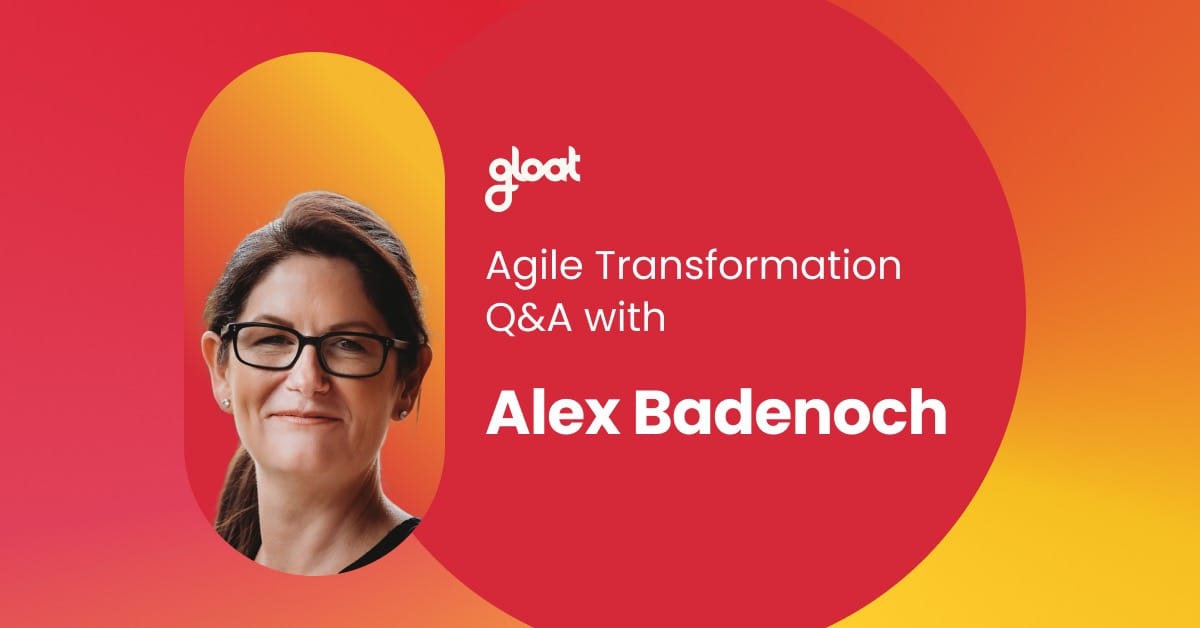The ultimate guide to the future of work
How HR leaders can set their organizations up for success

When the world of work was more stable and predictable, preparing for the next disruption wasn’t top-of-mind for most leaders. But now that the pace of change has accelerated and rapid pivots became a survival necessity, the future of work is dominating business conversations.
Leaders recognize that achieving success requires more than overcoming today’s challenges—it’s about anticipating the obstacles that lie ahead, and enabling the structures and strategies that will allow them to respond effectively. Innovative businesses are rearchitecting the way work gets done to ensure their workforces have the skills and tools needed to respond to ever-evolving priorities in record time.
While there’s still a lot of uncertainty about what our next chapter holds, there’s no doubt that leaders who keep their fingers on the pulse are best equipped to steer their organizations towards success. Consequently, executives must understand the undercurrents shaping today’s future of work discussions and the practices to prioritize to ensure their business is resilient in the face of disruption.
What is the future of work?
The “future of work” has been appearing more frequently in workplace conversations, but its meaning can be hazy. Deloitte defines the concept as a result of many forces of change affecting three deeply connected dimensions of an organization: work, workforces, and workplaces. It can also be thought of as a projection of how work will evolve in the years ahead.
The future of work is being shaped by a handful of powerful forces, including the growing adoption of artificial intelligence, how employee expectations are evolving, and shifts in talent management techniques and technologies. Navigating the future of work requires input and collaboration from leaders across the organization, with the Chief Human Resources Officer often at the helm of rearchitecting an approach to work that is human-centric and purpose-led.
7 future of work practices HR leaders must prioritize
When it comes to preparing for the future, leaders can’t set their sights on a singular priority or ready themselves for change one step at a time. Instead, executives must take stock of all the different forces impacting how work gets done and what people expect from their employers.
There is a handful of future of work practices that should be top of mind for HR leaders:
#1. Making hybrid working work
Leaders can no longer consider hybrid working an experiment—employee expectations indicate that it’s very much here to stay. In fact, if an organization were to fully return to an on-site arrangement, it would risk losing up to 39% of its workforce. Over 3 in 4 employees agree that their expectations for working flexibly have increased, further illustrating the fact that hybrid working is very much the new normal.
Despite this, many organizations struggle with devising flexible work schemes that align with employee preferences and business priorities. There’s even a new name for this challenge, coined by Stanford economics professor Nicholas Bloom: The Great Resistance. After more than two years of remote working, flexible scheduling, and zero commute time, many workers are refusing to head back to the office. About 1 in 5 employees that work from home aren’t coming into the office as many days as their employer requested.
There is no simple solution to the Great Resistance. In a competitive hiring landscape where skills are in short supply, leaders can’t risk losing top-performing employees to rigid attendance policies. Instead, Bloom recommends that managers determine how many days their teams need to be in-office and select “anchor days” when all team members are expected to come in.
Regardless of the policies that leadership teams land on, an overarching emphasis on transparency is crucial to achieving success in the hybrid world of work. Since employees may not work simultaneously across the organization, businesses must leverage digital tools to minimize communication gaps and ensure all team members have access to the same breadth of opportunities.
When it comes to technology that supports more flexible working, Schneider Electric’s VP of Digital Talent Transformation Jean Pelletier is quick to point to the talent marketplace as a necessity. “The talent marketplace is such an enabler for going hybrid. It gave transparency to the employees about what we had in terms of supply and demand. It replaced the old telephone method and allowed us to take down walls and borders,” she explains.
#2. Shifting to pixelated workforces
As the employee-employer relationship evolves, the way businesses are structured is also taking on a new shape. Namely, organizations are “unboxing”—they’re breaking down into smaller units in order to achieve the level of agility that the new world of work requires. The change is happening fast, with GE, Johnson & Johnson, and IBM all announcing plans to divide up their businesses in recent months.
Pixelation isn’t limited to massive corporations splitting apart; plenty of smaller businesses are practicing the same concept by breaking down jobs into projects and gigs. Once work is divided into tasks, it’s easier for employees across the organization to pitch in and break out of the confines of traditional jobs. Consequently, pixelization (also referred to as business composability) is emerging as a winning strategy for accelerating response times and empowering employees to build new skills by pitching in on cross-functional projects.
While workforce pixelation enables game-changing advantages, it also requires a major mindset shift and the introduction of new tools to align employees with opportunities—which is where workforce agility platforms come into play. The technology’s talent marketplace matches workers to projects and gigs based on their skills and capacity, in turn fueling a flexible, taskified approach to getting work done.
Innovative enterprises are already harnessing talent marketplaces to capitalize on the benefits of workforce pixelation, as Standard Chartered Bank demonstrates. As their Group Head of Human Resources, Tanuj Kapilashrami, notes, “We’ve been building an internal gig economy. As flexibility becomes more important in deciding where we choose to work, gigification is going to be the answer for building a compelling employee value proposition, as well as an opportunity to unlock the highest productivity through the most relevant skills. We’ve unlocked more than $1.3 million through internal gigs to date!”
#3. Cultivating an inclusive culture
Now that companies are facing a moment of reckoning on workplace diversity, many organizations are striving to move the needle on equity initiatives. Yet, some leaders are struggling to pinpoint the tools and frameworks that will turn these well-intentioned ambitions into realities.
Cultivating inclusivity requires more than a subtle shift; it’s about fundamentally reimagining workplace culture to democratize career development and empower employees from all walks of life. In many organizations, subjective criteria like geographic proximity or networking often determine who gets access to developmental opportunities.
In contrast, inclusive companies take an objective approach to talent management based on employees’ skills and experiences. Many of these companies utilize workforce agility platforms to ensure internal mobility is determined by competencies and ambitions, rather than subjective factors that will count some employees out without recognizing their potential.
In describing how the technology has enabled her organization to create a more inclusive workforce, Seagate’s Director of Talent Mobility and Talent Technology, Divkiran Kathuria, tells the following story: “When I opened a project for the first time on our talent marketplace, I ended up having a team from across the globe that helped me bring in the local context to our internal communications plan. None of us were from a primarily English-speaking country, but despite that, we worked beautifully together. And I could have never thought of those cultural and local nuances alone.”
She sums up the impact that Seagate’s platform is having by noting, “First and foremost, anyone using a talent marketplace will be immediately able to discover hidden talent—candidates and skills they didn’t know existed. And they’ll be able to experience how diverse, valuable, and capable these discovered candidates are.”
#4. Prioritizing comprehensive wellbeing
COVID-19 and the shift to hybrid working brought employee wellbeing to the top of HR leaders’ priority lists—and it’s going to continue to dominate discussions in the years to come. With this added emphasis, many businesses are striving to evolve their offerings to ensure their workforce feels supported, both emotionally and physically.
Yet, some wellbeing initiatives leave a lot to be desired. Although 70% of organizations made additional wellness investments during the last two years, most workers aren’t taking advantage of these offerings. Perhaps most notably, stress levels are heading in the wrong direction, with nearly two-thirds of employees believing that burnout has worsened over the past year.
Much like other epidemics, the consequences of workplace burnout can be devastating when left untreated. Job stress is estimated to result in approximately 120,000 deaths and almost $190 billion in healthcare costs each year. Yet minimizing burnout and promoting better employee wellbeing isn’t as simple as telling people to take more time off.
Instead, it comes back to empowering employees by giving them more autonomy. As Daniel Pink explained at Gloat Live 2021, burnout happens when employees experience a high level of challenge but lack decision-making power. In contrast, workers who get more sovereignty enter what Pink refers to as “flow”, or being so absorbed in something that you lose track of time.
In addition to banishing burnout, giving employees greater decision-making power can help them prioritize other elements of wellbeing, such as taking time off to recharge. Deconstructing jobs into projects and gigs enables people to step up when they have additional capacity and reach out to colleagues for support. Since no responsibility is dependent on a single team member, everyone is empowered to take time to recharge and refocus without fear that high-priority tasks will slip through the cracks.
#5. Embracing automation to optimize talent management
When it comes to talent management, many HR leaders might feel like they’re stuck between a rock and a hard place. There’s more pressure than ever to fill roles with critical skills amidst talent scarcity, but there’s also an effort to optimize costs in the current economic climate. To satisfy skills needs, both effectively and efficiently, HR leaders must embrace new talent management frameworks underpinned by revolutionary digital tools.
Technological innovations are empowering executives to reimagine every element of work and the workplace, and talent management is no exception. An AI-powered Workforce Agility Platform harnesses Workforce Intelligence to give leaders a full picture of the skills their workforce has and the capabilities they should prioritize next. This unified platform centralizes dynamic skills insights and recommendations from harmonized data sources so HR leaders can make better business decisions that will set their organizations up for future success.
In describing the talent management challenges that HR leaders are facing today, Seagate’s Kathuria explains, “Competencies are changing faster than ever, skills are coming in and going out of the market faster than ever. So while a basic job architecture is still needed to really know how a role sits in an organization, the [AI-powered] skills clouds have become very important.”
She goes on to explain how Workforce Intelligence fuels a more efficient skills-based talent management strategy, noting, “Imagine having to update those skills every three months versus having something that evolves on its own. You don’t need to say what is the new job out there in the market, or what’s the new skill in the market, because you automatically get it as part of the technical infrastructure already in there.”
By harnessing a single source of truth for workplace skills, HR leaders can ensure they’re maximizing the capabilities within their workforce while determining what missing skills they may need to hire for. Workforce Intelligence also keeps a pulse on job and skills trends, equipping HR leaders with an understanding of the market value of a job, showcasing how the competition is positioning their jobs, and pinpointing which capabilities are on the rise or decline.
#6. Engaging generation Z employees
Gen Z might be relatively new to the workforce but they’re only going to continue to make more of an impact in the years to come. There’s already lots of speculation, and plenty of attention-grabbing headlines, about how these digital natives will transform the way we work.
The newest additions to the workforce are also thought to be the most restless, with 1 in 4 generation Z employees hoping to leave their employer within the next six months. At a time when every business is struggling to retain talent, and no organization can afford the costs associated with high turnover rates, this is undoubtedly troubling news for employers.
Rather than looking to fun perks or additional vacation days in an effort to get young workers to stay, HR leaders must understand what generation Z team members are actually looking for from their employers. Research shows that internal mobility tops the list, with 3 in 4 employees in this age group asserting that they are looking to learn or practice new skills, and 61% expressing interest in increasing their responsibilities and progressing their careers.
However, many organizations do not have the systems in place to activate internal mobility at speed and scale. All too often, employees are expected to climb one-size-fits-all career ladders that fail to take their personal goals and inherent strengths into account. Since these workers have limited visibility into lateral opportunities within their company, many believe that if they want to take their careers in a new direction, they’re better off calling it quits.
In contrast, organizations that prioritize internal mobility empower all employees to identify meaningful career development opportunities that meet their goals, often with the help of technologies like workforce agility platforms. Mastercard is one such business, as Chief Talent and Organizational Effectiveness Officer Lucrecia Borgonovo explains. “At Mastercard, we are introducing an AI-driven opportunity marketplace that makes it simpler, faster, and easier for employees to develop and learn from their teams—whether through short-term projects, networking, mentorship opportunities—or even the opportunity to change jobs entirely.” It’s this kind of employee-led approach to career development that’s going to be critical for keeping generation Z workers inspired and engaged.
#7. Getting to the root of today’s turnover challenges
For most executives, the concept of the Great Resignation is nothing new. Throughout 2021, employees called it quits in record numbers, often in search of jobs that offered greater flexibility and career fulfillment. While many leaders may have hoped that this turnover tsunami would be a temporary trend, Gartner predicts that it’s likely to continue, especially if employers fail to give people the autonomy they’re looking for. In fact, 52% of employees say flexible work policies will impact their decision to stay with their organization.
And it’s not just where work gets done that people care about. Our own research shows that a lack of growth and development opportunities is the second most common reason that employees decide to call it quits. Similarly, 2 in 3 workers claim that they will leave their jobs if there is no potential for internal mobility. Consequently, it’s no surprise that leading companies have begun tapping into workforce agility platforms as a means to improve internal mobility. By dynamically aligning employees to relevant projects, gigs, and assignments, the platform’s talent marketplace democratizes access to opportunities at a speed and scale that would otherwise be out of reach.
Businesses that were early adopters of the talent marketplace credit the technology with helping them avoid the mass employee exodus that so many of their competitors experienced. According to Seagate’s Chief Human Resources officer Patricia Frost, “We haven’t seen the Great Resignation at Seagate. The game-changer for us is this journey we’ve been on with Gloat. Employees have their careers in their hands and they can see vertical- and lateral-movement possibilities.” Schneider Electric’s Vice President of Digital Talent Transformation, Jean Pelletier, echoes a similar sentiment, noting, “Right now, what I will tell you, especially with the Great Reshuffle and the Great Resignation, is that we’re holding steady. And that’s super important to know.”
The platforms can also be leveraged to ensure people feel connected to the work they’re doing, which is critical, given the premium employees put on purpose. While traditional talent management decisions may fail to factor personal ambitions into the equation, suggestions that a workforce agility platforms generate are grounded in employees’ goals. In describing her experience harnessing Unilever’s talent marketplace, FLEX Experiences, Vanessa Otake says, “FLEX Experiences gave me an opportunity to bring my purpose and work closer together. Now that I’m in this new role, I feel like a kid in a sweet shop. I am back to learning again, growing again, and being able to grow with something that I am really passionate about.”





